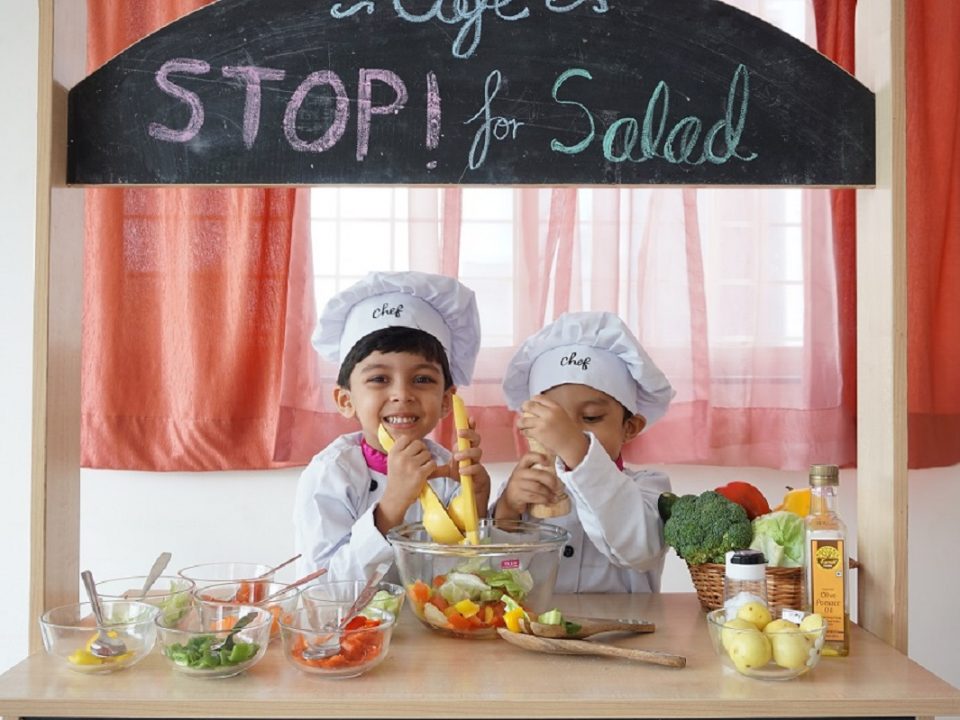- Call/Whatsapp: +91-9372801276
- Mail us: info@viverointernational.com
We all instinctively know from birth that food is essential to our own survival. Studies show that a nutritious diet will make your child healthier and better able to learn.
Children can be picky eaters. For many parents, picturing a toddler stubbornly throwing a piece of broccoli to the floor is easy – after all, it’s an all too familiar scene. However tiring it might be, it’s important that you find ways to convince your child to eat that piece of broccoli, as studies show that having a balanced and nutritious diet directly impacts all aspects of a child’s growth and development.

The relationship between nutrition, health and learning is undeniably strong: Nutrition is one of the three major factors that impact a child’s development. As genes and environment are the other two factors, eating a certain food cannot guarantee that your child will be smarter, although my mother did successfully teach (trick?) me to eat fish when I was little for that very reason. Nevertheless, research studies show that nutrition in a child’s early years is linked to their health and academic performance in later years.
Healthful eating involves consuming a variety of whole and nutritious foods. By incorporating foods from the different food groups into every meal, children should have a well-rounded and healthy diet. The “MyPlate” initiative by First Lady Michelle Obama seeks to simplify healthy eating by presenting a dinner plate divided into four different pieces with fruits and vegetables comprising half of the plate and grains and proteins comprising the other half, according to the Children Health website. A small circle to the right of the plate represents dairy in the diet. Foods that contain excess fats and sugars should become occasional foods, only added to the diet once in a while.
Children have important daily dietary needs to support continued growth and physical development. Foods that contain vitamins, minerals, complex carbohydrates and protein will provide the nutrients necessary for growth and development.
Children tend to appreciate things on a scale that makes them feel larger. Every now and then, let your children eat from tiny dishes. Baby forks and spoons are perfect miniature utensils. Smaller dish size automatically scales down portion size, meaning children will actually have room for second helpings. Encourage them to serve themselves. They can refill glasses using a tiny pitcher, creamer, or even a small measuring cup with a spout.
When eating is about companionship, it builds positive associations between healthy food and togetherness. Relaxed conversation also de-emphasizes who eats how much of what. Children who eat family meals regularly tend to have better dietary behavior as teens. And family discussions also boost brainpower.
This is one way to take advantage of hunger to develop lean eating habits. Fruits and veggies are brimming with nutrients but low in calories, so a first course of produce makes sense. Plus, studies show that this method spurs children to eat more veggies during the meal as well. Try offering different fruits and veggies while you’re cooking, or whenever appetite hits. Liven it up on occasion with a variety of dips and spreads.
Paint distinctive “face” plates at one of those decorate-your-own pottery places. Put nothing more on each plate than a simple outline of eyes, nose, and mouth. That way, each meal’s food arrangement will create a different face and make it interesting for the children.
If you have the space for a bit of edible garden, put your child in charge of at least one planting. A child is much more likely to eat a homegrown crop, especially after tucking peas in the ground and watching the seedlings emerge, grow, and flower. If you don’t have room for a garden, start a jar of sprouts on the counter.
Watch food shows together. Develop an archive of cooking videos that inspire you, and consider filming your own cooking videos. Page through food magazines to find recipes you’d both like to try. You could regularly refer to our very own ‘ Cocina Treats’ for some healthy snacks for your children.
